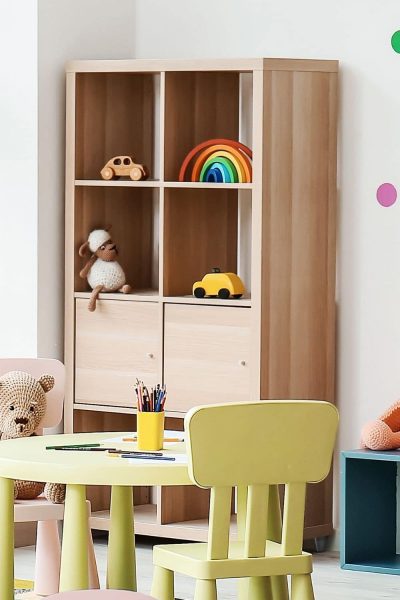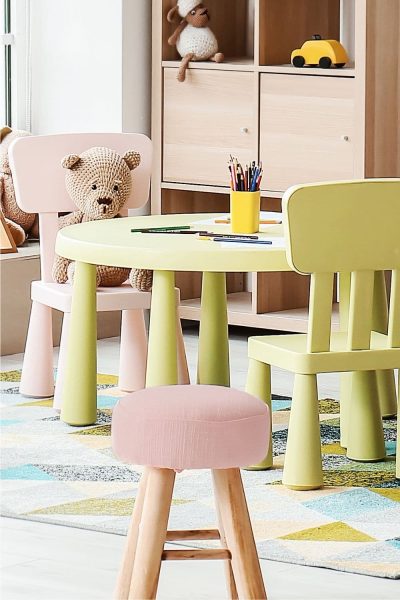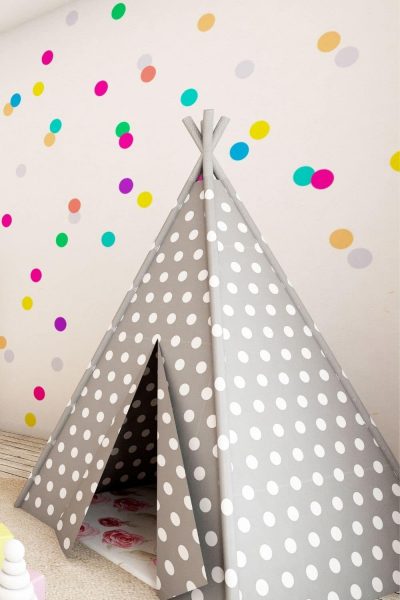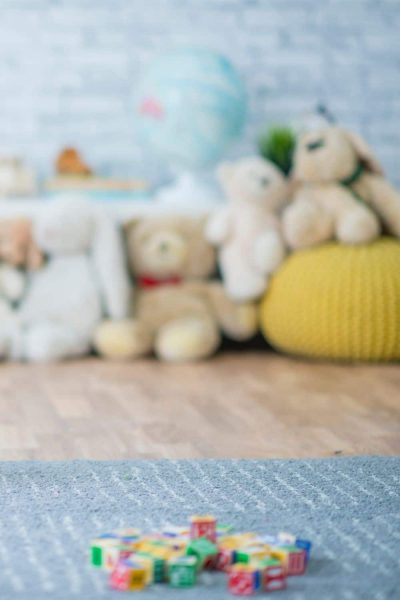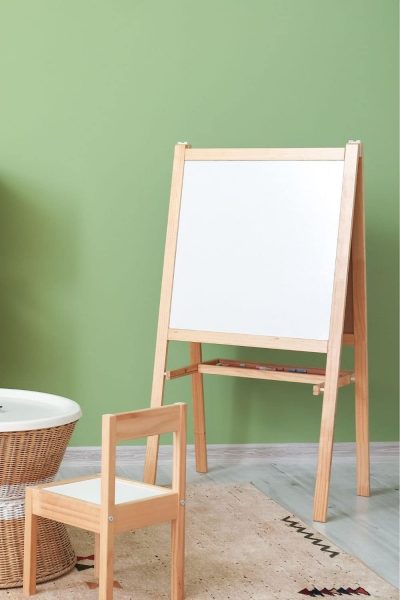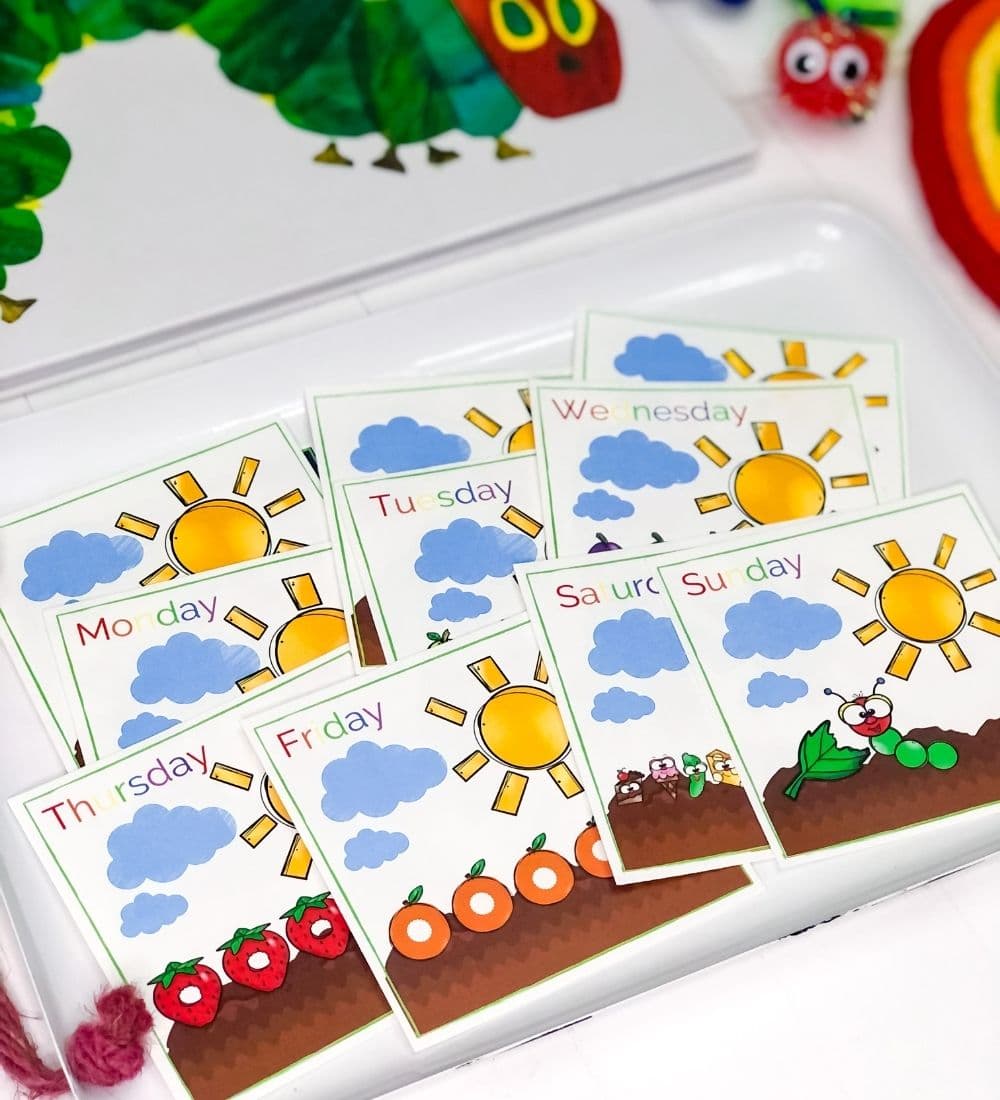Just a heads up-Some of my pages may contain affiliate links only to products that I absolutely love! If you buy something through one of my links-you won't pay a penny more-but I'll make a small commission.
purposeful play
How to Organize Your Playroom
Create an Organized, Purposeful Playroom to help your kids stay engaged in their play!
Have you ever walked into a child’s playroom or designated play space and felt completely overwhelmed and anxious?
Have your ever felt frustrated not knowing where anything is because everything is all thrown together and completely unorganized?
I know I sure have! And in my own home too!
Now imagine how a child would feel walking into that same unorganized play space? They would feel all these things we feel-but 10 fold.
However, on the other hand, when a child enters an organized playroom-a purposeful play space. They would feel the opposite. They would feel inspired, calm and creative! They would be able to quickly become engaged in in-depth, independent, purposeful play.
Yes, I know-it can sound completely overwhelming to tackle the playroom and yes it does take some time and planning. However I promise you it will be well worth it in the end!
Here you will learn the key components to organizing a playroom as well as a Step by Step Guide to Creating an Organized Playroom. You will also get ideas and inspiration on purposeful play materials to add to your child’s playroom that will promote high level, purposeful learning!
get your guide here!
Printable Step by Step Guide to an Organized Playroom
Subscribe to our newsletter and get our Free Printable Step by Guide to an Organized Playroom!
purposeful play
what is an organized, purposeful playroom?
1
organized and inviting
2
purposeful materials
3
easily accessible
I'll show you how
purposeful play
7 Steps to Organizing the Playroom!
create a playroom that your kids will love and use
step 1
Take Inventory
Take inventory of what you already have
The first thing you need to do is go through all of your child’s toys and learning materials
Decide what you want to keep and what you would like to part with.
Recycle any toys, games or materials with broken or missing pieces (Broken items or items with missing pieces can cause unnecessary frustration. They also take away the satisfaction a child gains from being able to start and complete a task. Broken items pose a safety concern and take away from the intended purpose of the item).
step 2
high quality toys
choose high quality, purposeful materials
After you’ve taken inventory and decided what to keep, think about other items you would to add.
Focus on QUALITY of materials in the playroom over quantity.
Remember Less Is More!!
When a playroom is overstocked, it can easily become overwhelming for the child thus leading to unfocused and chaotic behavior.
If you have lots of a materials and toys, consider rotating items in and out every month instead of keeping them all in the playroom at one time.
If possible keep electronic toys to an absolute minimum.
Focus instead on materials that enable your child to read, write, create, build and pretend.
Electronic/talking toys with lots of bells and whistles provide very little in terms of brain development and more often than not lead to confusion, non engagement and over stimulation.
Decide what new materials you would like to add to the playroom.
step 3
get organized
Time to sort and get organized
-
The key to an organized playroom or play space is that everything has to have a home-possibly with a clear label.
-
It’s absolutely vital that every item and toy has a clearly designated spot. This will enable your child to know where everything is, which in turn will promote purposeful play. It also allows children to clean up independently and take pride and ownership of their environment.
-
An organized play space will allow children to engage in play in a meaningful, in-depth, constructive way.
-
To get organized, the first thing you want to do is sort all your materials and toys into categories (Example: puzzles in one pile, vehicles in another, blocks together and writing utensils grouped together).
-
Next, find containers, baskets and bins to store each category that you have created.
-
Each category should have its own container.
-
Example: all dinosaurs in one basket, all blocks in another, all dolls in one, all vehicles in one.
-
Look around the house-you might be surprised how many containers and bins you have laying around the house that would work perfectly.
-
Other places to look include Facebook Market Place, Craigslist, thrift stores, IKEA, Target, Walmart, Amazon, your local dollar store and garage sales. Target’s “Dollar Spot” is a great place to check-they will often times have lots of inexpensive bins, tins and baskets.
-
Keep in mind that large items can be stored on a shelf and won’t need a container (example-large trucks lined up on a shelf, puzzles stacked neatly on a shelf or in a puzzle holder).
step 4
Find a Space
decide where the play space will be
Now it’s time to determine a location for your play space if you haven’t already.
The space you choose does not have to be big, especially if it’s well thought out, with a focus on quality of items and organization.
You also do not need an entire room. You can turn any room in your house into a dual purpose room. I have done this many times!
Some ideas for spaces to transform into a creative learning space include a large storage room, 1/2 of the dining room, a section or wall in the living room, an unused guest room, or your home office.
Keep in mind that it should be a space where a child can safely enter and feel focused and engaged, not overstimulated and disorganized.
step 5
add furniture
Furniture Playroom Ideas
Now that you have determined the location of your playroom it’s time to figure out what kind of furniture you can add to the space.
Shelving is important as you will need a space for all the bins and baskets.
Shelves should be sturdy and low for children to access easily and safely.
Cube shelves are perfect for creating an organized playroom.
Be sure to include floor space for children to create and build. Floor spaces can be easily designated by adding a large area rug.
If possible, include a child size table or desk. A coffee table with cushions as seats is a great option as well.
step 6
label baskets
add labels to bins and baskets
-
Adding labels to your bins and baskets is a great way to keep your playroom well organized and tidy. Though it can be time consuming-it is well worth it in the end.
-
You can add labels with both a picture and word or just the word.
-
Labels not only provide a way to stay organized but also turn your child’s playroom into a literacy rich environment.
-
By labeling each bin and basket, children will begin to develop a deep understanding of letters and words and the importance they have in our world.
-
Labels reinforce letter recognition and letter sounds.
-
Labels will encourage the development of sight reading. Sight reading is the ability to look at a word and know what it says based on the shape and length of the word as well as the beginning letter. It won’t take long before your child will be able to look at the word Blocks and know what it means because they see it clearly every time they pull out the block basket.
-
You can create labels in many ways. Print labels and Velcro them onto the basket. You can use printing labels and stick them onto containers. You can also find containers with labels already included on them. Another option is to use clothes pins and clip labels onto the basket that way!
step 7
add cozy touches
Make it cozy with soft touches
-
Make your child’s playroom cozy and welcoming by adding soft touches.
-
Think about adding lamps, rugs, curtains, pillows, stuffed animals, blankets, plants, soft chairs or a canopy.
-
Add a lot of soft items and items with different textures.
-
Make sure the lighting is soft and inviting.
-
Add family photos.
-
Add photos of nature.
-
Have a space to display your child’s artwork, creations or photos of completed projects.
-
The goal is for your child to enter the space and feel calm and welcomed, with the sense that what happens in this space is valuable and important!
step 8
give child a tour
give your child a tour
Now that you have your newly designed space just the way you want it- it’s time to show it to your child!
Give your child a tour of their new play space.
Show them where everything is.
If you added labels to the baskets and bins, be sure to point out what is written on them.
Highlight the fact that everything has its own place.
Point out the labels and talk about the importance and ease of putting things back where they belong.
Practice cleaning up together.
Set the standard from the beginning that things need to be put back where they belong.

